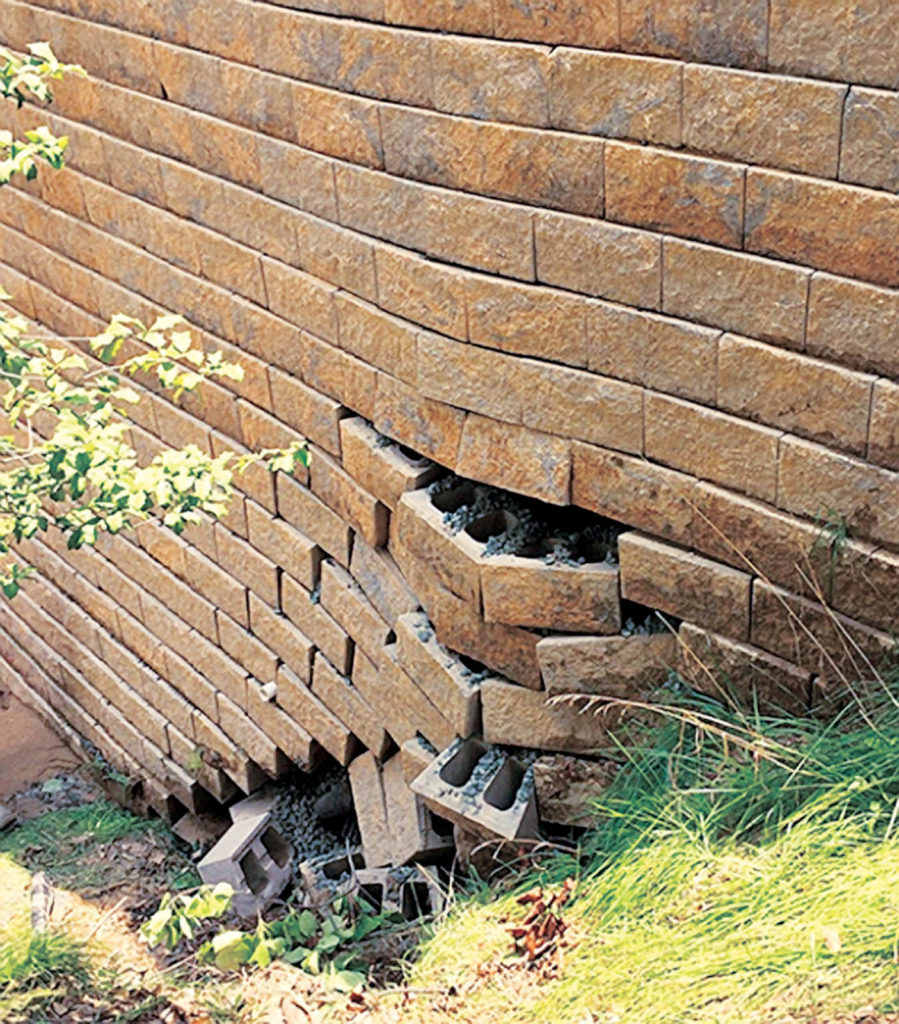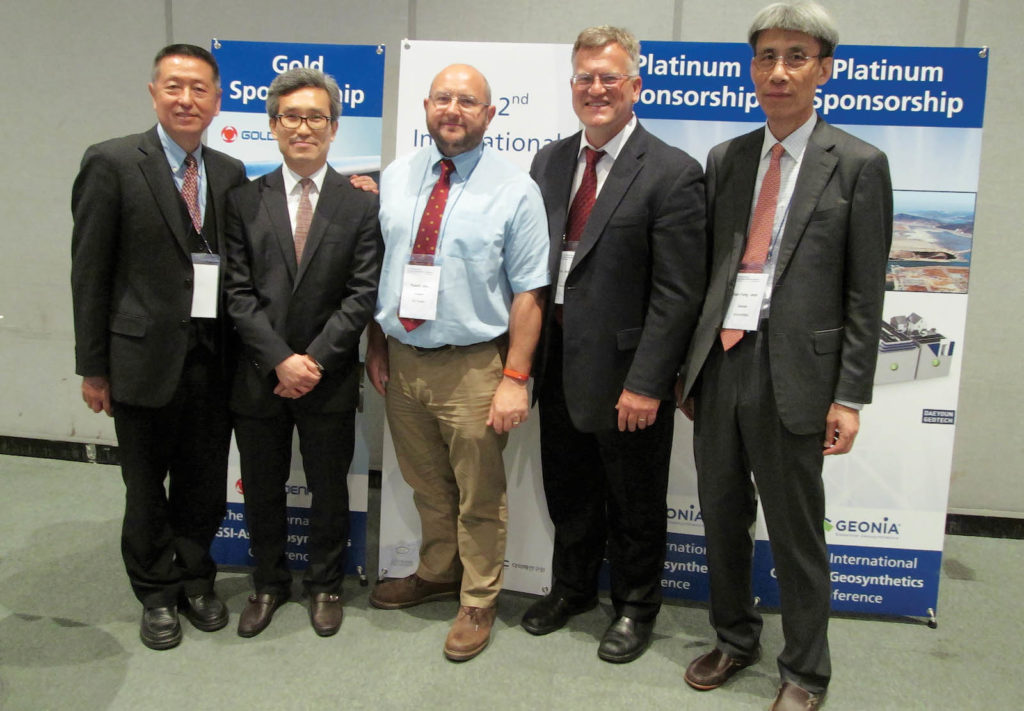Don’t be afraid of making horizontal geomembrane seams on side slopes
August 1st, 2018
Over the years, there have been many discussions raising concerns about having geomembrane field seams located horizontally on side slopes. By not allowing such seams, it usually results in many short roll lengths that become either unused or difficult to tailor into the flat area of the project. Stated differently, the installation costs increase accordingly. […]
GMA Techline
February 1st, 2018
Determining quantity of recycled HDPE in a geonet Q: I have a question about high-density polyethylene (HDPE) geonets. Is it possible, by thermogravimetric analysis (TGA) and differential scanning calorimeter (DSC) analysis, to determine the quantity of recycled HDPE present in a geonet? I have a geonet that, I think, is made with virgin and recycled […]
MSE wall failures vis-à-vis the lack of filtration design
April 1st, 2017
Since 2001, the Geosynthetic Institute (GSI) has been accumulating data on failures of geosynthetic-reinforced mechanically stabilized earth (MSE) retaining walls. We currently have 301 cases, with 191 (63%) caused in whole or part by water in, or adjacent to, the reinforced soil zone. We sincerely hope that our past writings and webinars are helping to […]
Two new programs from GSI
October 1st, 2016
We are delighted to report two new programs recently developed at the Geosynthetic Institute (GSI).(1) An online Designing with Geosynthetics (DwG) course is now available: www.geosynthetic-institute.org/courses.htm. Scroll down to Course #3 to see the requisite details. The course itself is completely coordinated with the 6th edition of the DwG textbook. It consists of 1,540 slides […]
GSI report from annual meeting at GeoAmericas
August 1st, 2016
The Geosynthetic Institute (GSI) annual meeting was held April 11 in Miami, Fla. in conjunction with GeoAmericas 2016. There were 33 attendees representing 35% of the 80 active GSI member organizations. I want to thank all that were in attendance for their time and efforts. The outline for the one-hour meeting included: welcome and overview, […]
Questions and answers from the GMA Techline
August 1st, 2016
Geosynthetic filter failure Q: I am interested in your upcoming webinar on geosynthetic filters and was hoping to get a little clarification on the content. I’m most interested in how geotextile fabrics are used with riprap but I also understand these fabrics are perhaps more commonly associated with roadway construction. How much does this webinar […]
Avoiding geomembrane whales and hippos in surface impoundments
April 25th, 2016
The incidence of geomembrane whales/hippos in surface impoundments containing various types of liquids is, unfortunately, not uncommon. See, for example, GSI White Paper #30, which discusses corrective actions after they occur. This article, however, addresses the situation before it occurs. Clearly, the presence of a geomembrane creates anomalies in the underlying subgrade that can cause […]
Conductive geomembrane
February 1st, 2016
We are developing a conductive liner. I want to know if there is any kind of small-scale test that I can apply in our laboratory as a quality control test. Pacqua | Mexico Pacqua, Great to hear from you and nice to know that you are developing a conductive GM. What is typically done in […]
The 2nd International GSI–Asia Geosynthetics Conference
October 1st, 2015
Some of you know that the Geosynthetic Institute (GSI) and Inha University, Incheon, Korea (Rep.), have had an association for more than 20 years. In June, we advanced this relationship during the 2nd International GSI–Asia Geosynthetic Conference. The conference chairman was Prof. Han-Yong Jeon of Inha University, the conference secretary was Dr. Jungjo Yuu of […]
Retrospective of 25 GRI conferences
August 1st, 2015
The Geosynthetic Research Institute was founded in 1986 at Drexel University in Philadelphia, Pa., with the purpose of conducting research and development on all types, functions, and applications of geosynthetics used in the constructed environment and its infrastructure. With R & D at the core of the activity it was natural that archival publications would […]
 TEXTILES.ORG
TEXTILES.ORG





